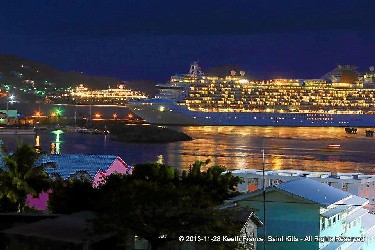Jamaica’s Unnatural Disaster
by Jake Johnston
WASHINGTON, DC – When Hurricane Sandy ripped through the Caribbean it caused massive damage to the island-nation of Jamaica, but it’s not the reason Jamaica’s economic prospects are so poor right now.
A large share of the responsibility for that lies with the International Monetary Fund (IMF), which has been squeezing the country since 2010.
The damages caused by Sandy provide just the latest example of the negative effects of the severe austerity policies pushed by the IMF and backed by the Jamaican government.
Early estimates are that Sandy has caused over $60 million in damages (some 2 percent of non-interest government expenditure), yet there may be limited action the government can take without cutting important spending elsewhere.
That’s because the Jamaican government is trying to reestablish a lending agreement with the IMF, and the lender is demanding an extremely tight fiscal policy. Last week, Finance Minister Dr. Peter Phillips said that despite the massive damage from Sandy, the government will have to keep to “the strict fiscal program.”
It shouldn’t come as much of a surprise. Tropical Storm Nicole hit Jamaica in the fall of 2010, during the time of the previous IMF agreement, causing damages equal to 1.7 percent of GDP. Yet, because the storm “did not have hurricane-force winds, the government was not eligible for relief under the World Bank-administered Caribbean Catastrophe Risk Insurance Facility (CCRIF).”
Rather, the IMF agreed to adjust the fiscal target by 0.2 percent of GDP, just a fraction of what was needed to repair and prepare for the next disaster.
In the end, Jamaica increased expenditures to cover the damages but it was entirely offset by cuts elsewhere. (The IMF stopped disbursing money to Jamaica in 2011 for their failure to adhere to the program, yet the Jamaican government still hit the required primary budget surplus target nearly right on. More likely the agreement went off-track because the government decided to honor previous commitments to raise wages and pay back-wages to public sector workers, a big no-no for the IMF.)
As Juan Montecino and I have documented, first in May 2011 and then again in May 2012, the Jamaican government responded to the worldwide recession with austerity policies pushed by the IMF.
The result, as anticipated, was slower economic growth and a failure to reduce the debt (the ostensible reason for pushing austerity).
Meanwhile, what expenditures Jamaica did make went towards paying interest on their crippling debt, which has absorbed over 30 percent of expenditures the past three years. Jamaica has the largest debt burden in the world, greater even than debt-riddled Greece. The result has been an estimated ten-year period of negative per-capita GDP growth.
Recent IMF research has shown that cutting spending during a recession has greater negative effects on GDP than they had previously estimated. Perhaps this is a reason why the economic downturn for Jamaica was so much worse than the IMF anticipated.
Unfortunately, neither the Jamaican government nor the IMF seems to be learning from their past mistakes. While Jamaica needs real debt relief and public investment to spur growth, as they once again approach the IMF, the signs are pointing to more of the same – not even a devastating hurricane can get the IMF to relax their conditions.



